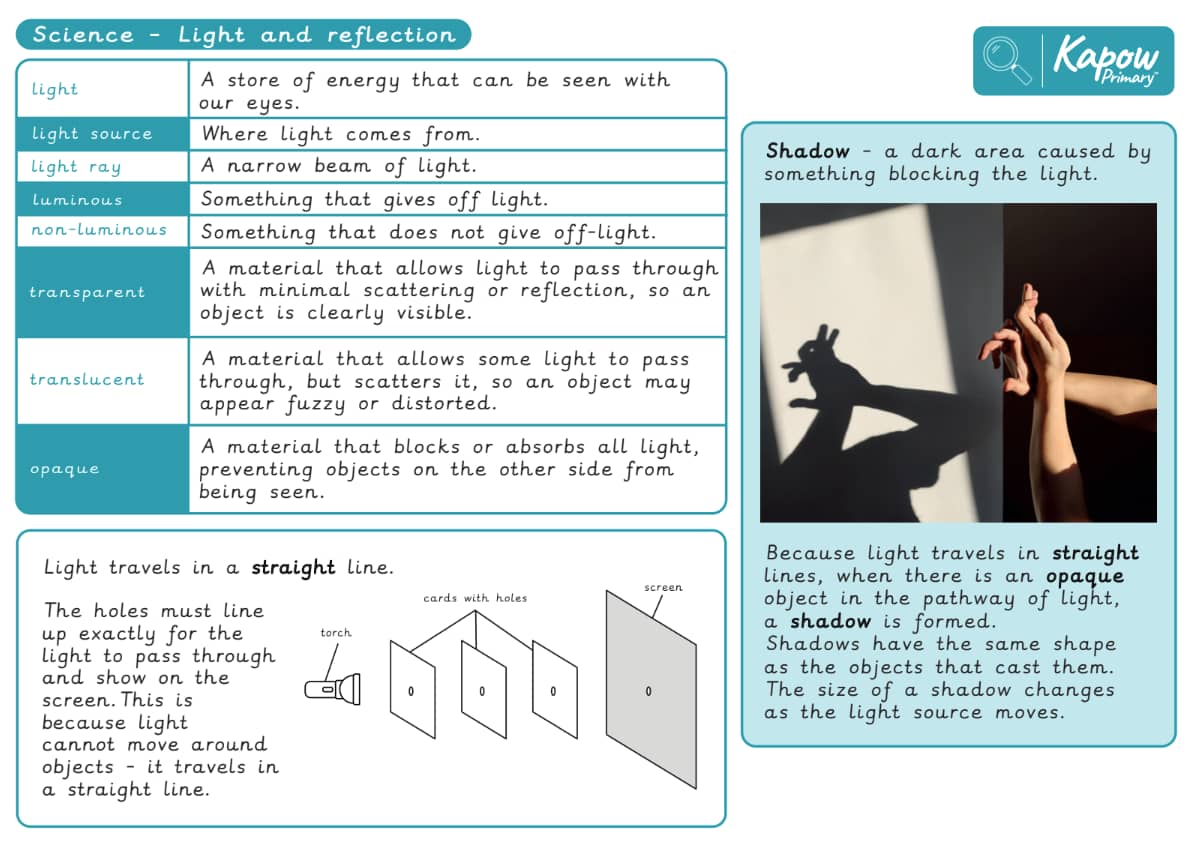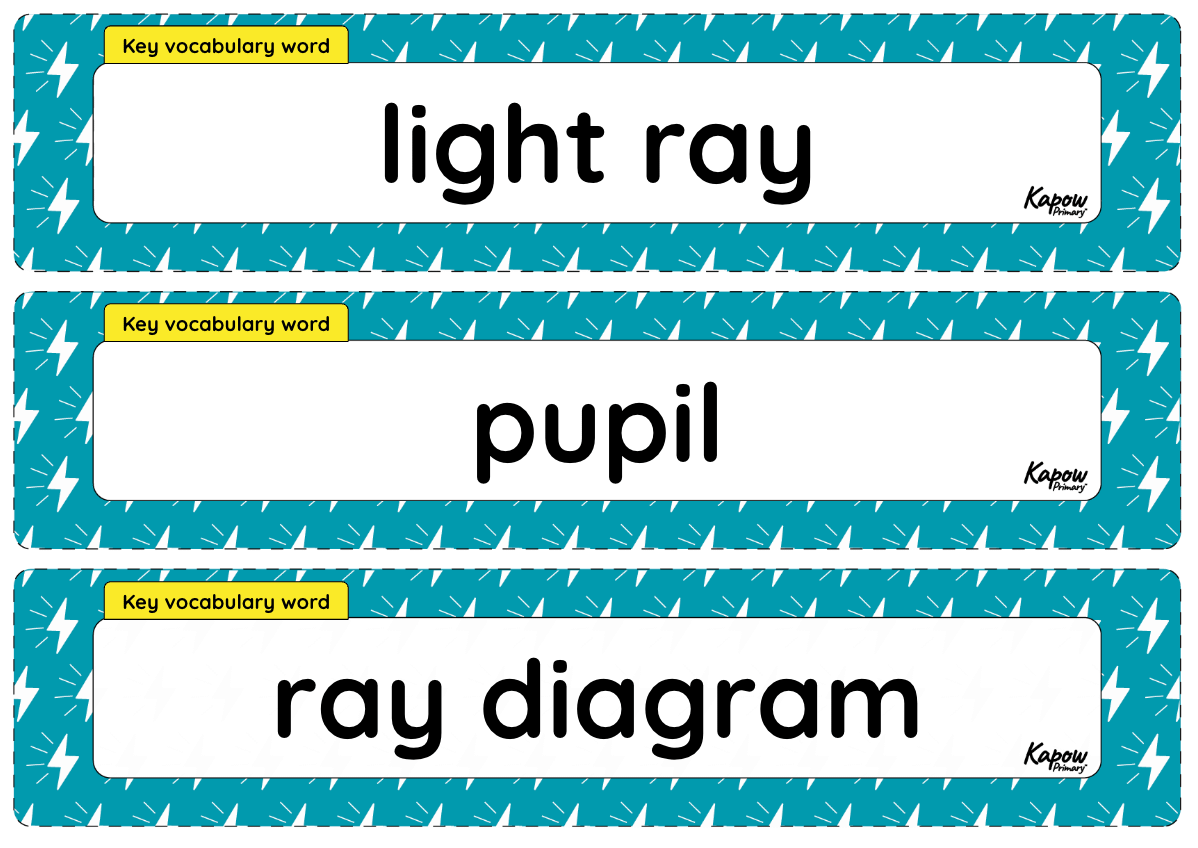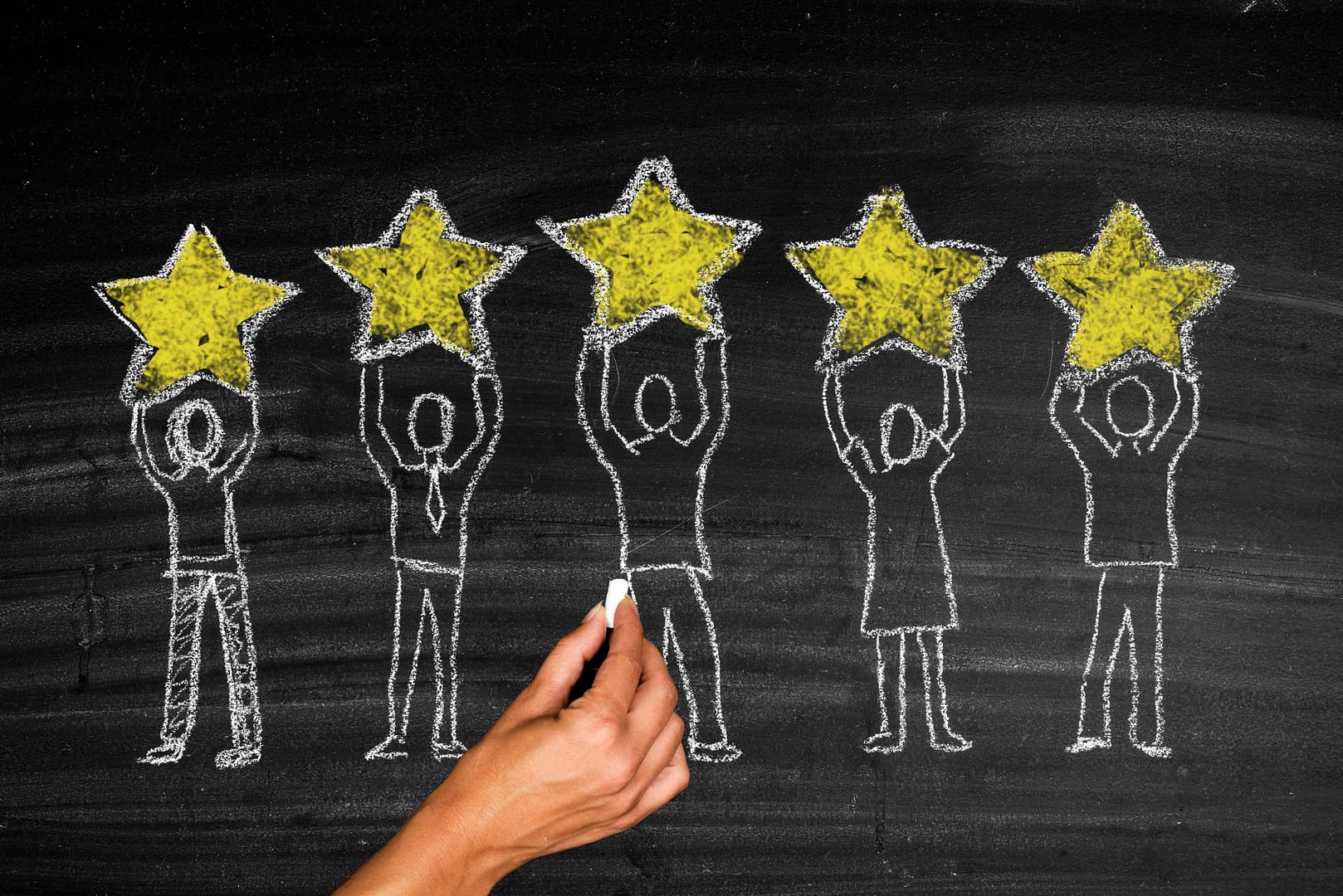Energy: Light and reflection
Exploring how light travels in straight lines and that this explains observations of shadows and reflection.
- Subjects >
- Science >
- Upper key stage 2 >
- Year 6 >
-
Energy: Light and reflection
Unit outcomes
Pupils who are secure will be able to:
- Compare sources of light and explain how the eye is protected from light.
- Describe how light travels and how we see luminous and non-luminous objects.
- Recall factors that affect the size of a shadow and describe how the distance between an object and the surface its shadow is cast on affects the size of the shadow.
- Use ray diagrams to explain why shadows change size and why the shape of a shadow matches the object that was cast.
- Recall what happens to light when it reaches a smooth mirror surface.
- Identify the incoming and reflected rays and describe the relationship between their angles.
- Use mirrors to make a working periscope and explain how a periscope works using ray diagrams.
- Recall a range of uses of mirrors and reflection, describe how a mirror reflects light in different situations and explain how light is reflected using knowledge of light and reflection.
When working scientifically, pupils who are secure will be able to:
- Make observations about the properties of light.
- Use my observations as evidence to support conclusions about light.
- Draw ray diagrams.
- Pose testable questions in response to observations.
- Record my measurements as a line graph.
- Use my line graph to extrapolate data and make predictions about missing values.
- Recall various jobs or inventions that use mirrors and reflection.
Please note that Kapow Primary Science lessons are designed to be 1 hour and 30 minutes long to reflect the requirements of a core subject.
Suggested prior learning
Energy: Light and shadows
Get startedLessons
Lesson 1: The pathway of light
Knowledge
- To describe the pathway of light.
Working scientifically
- To use evidence to form conclusions.
Lesson 2: See the light
Knowledge
- To describe how we see.
Working scientifically
- To draw scientific diagrams.
Lesson 3: Measuring shadows
Knowledge
- To explain how shadows change.
Working scientifically
- To pose questions.
Lesson 4: Reflecting light
Knowledge
- To investigate what affects the angle of the reflected ray.
Working scientifically
- To record results as a line graph.
Lesson 5: Making a periscope
Knowledge
- To explain how a periscope works.
Lesson 6: Using mirrors
Knowledge
- To explain how mirrors are helpful.
Science in action
- To explore different jobs or inventions that depend on reflection.
Key skills
Key knowledge
Related content
Unit resources

Knowledge organiser – Science Y6: Energy: Light and reflection
Aimed at pupils, two pages providing key facts and definitions from the unit ‘Light and reflection’.

Vocabulary display – Science Y6: Energy: Light and reflection
A display version of the unit vocabulary from the unit 'Light and reflection'.
Cross-curricular opportunities
English: Spoken language; Writing – composition.
Mathematics: Number – addition, subtraction, multiplication and division; Statistics
History.
Art and design.
British values: Mutual respect; Democracy; Rule of law.

